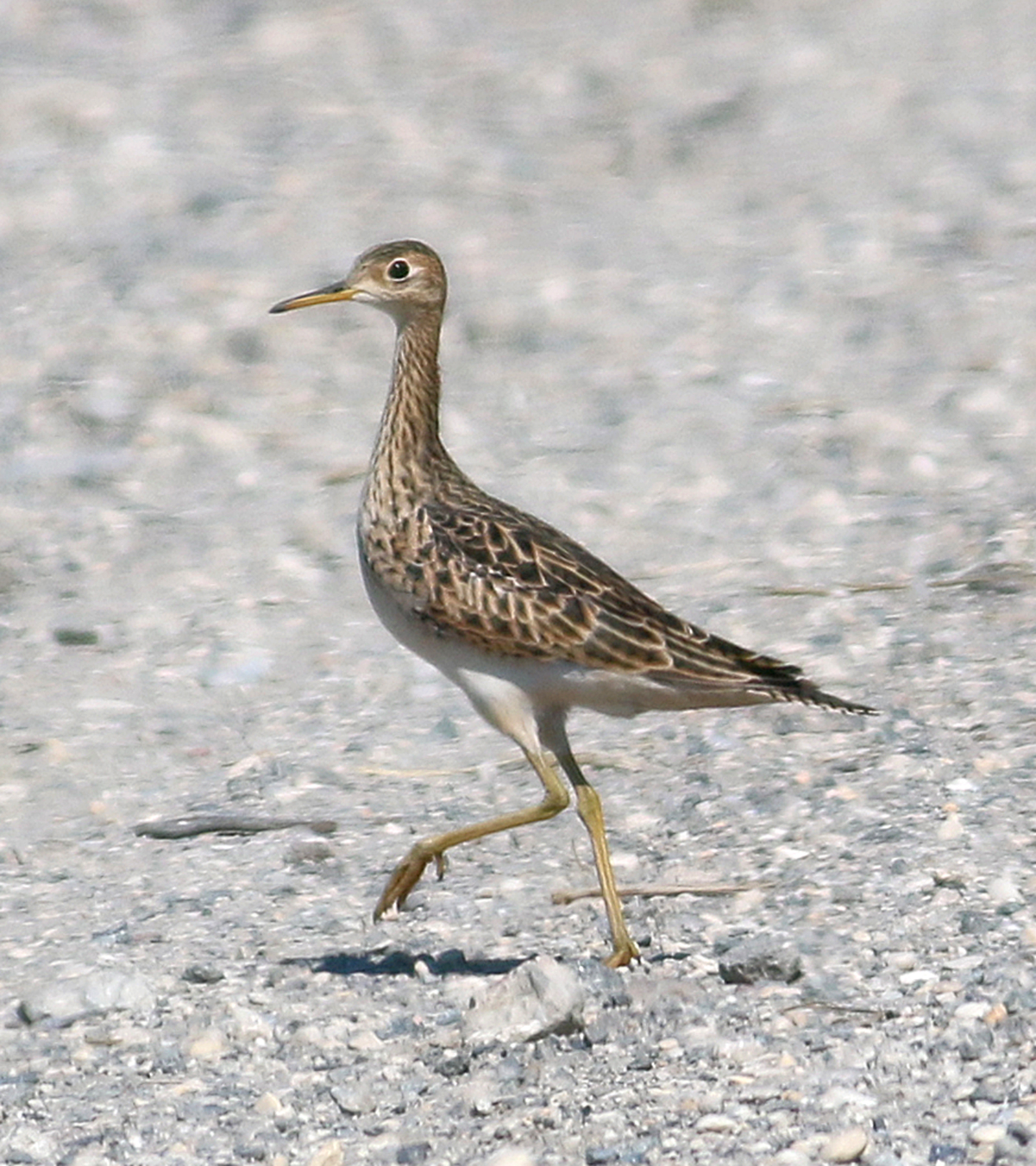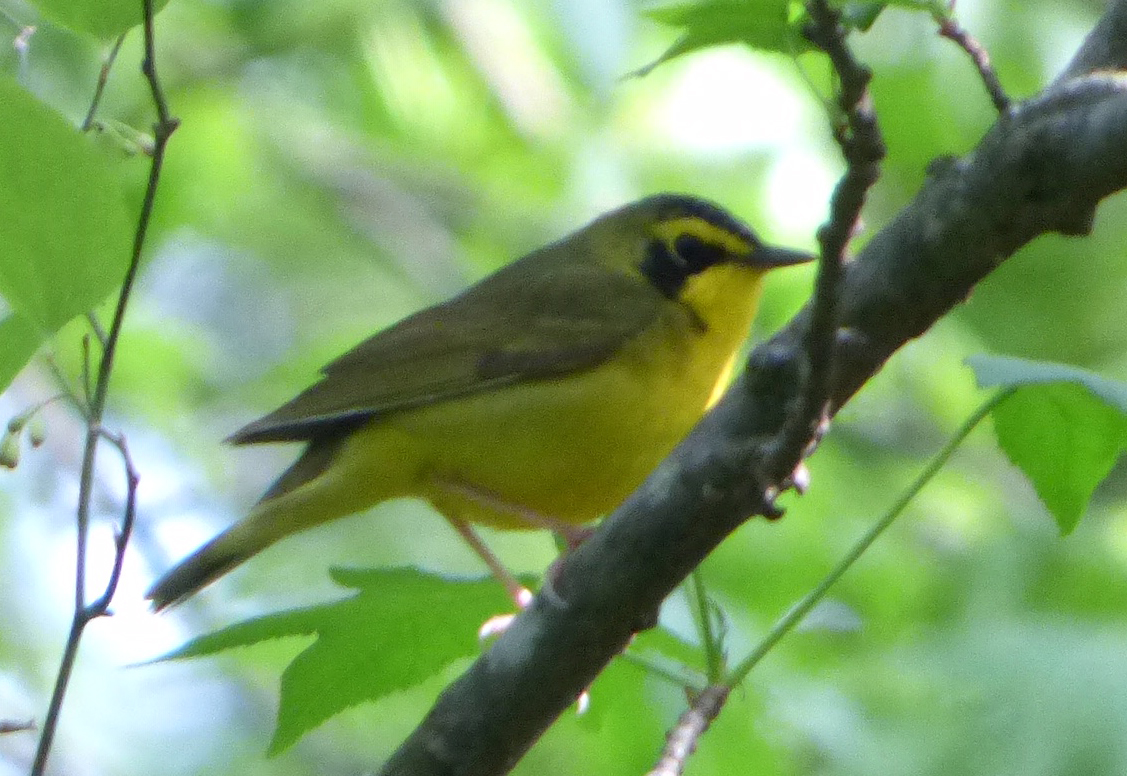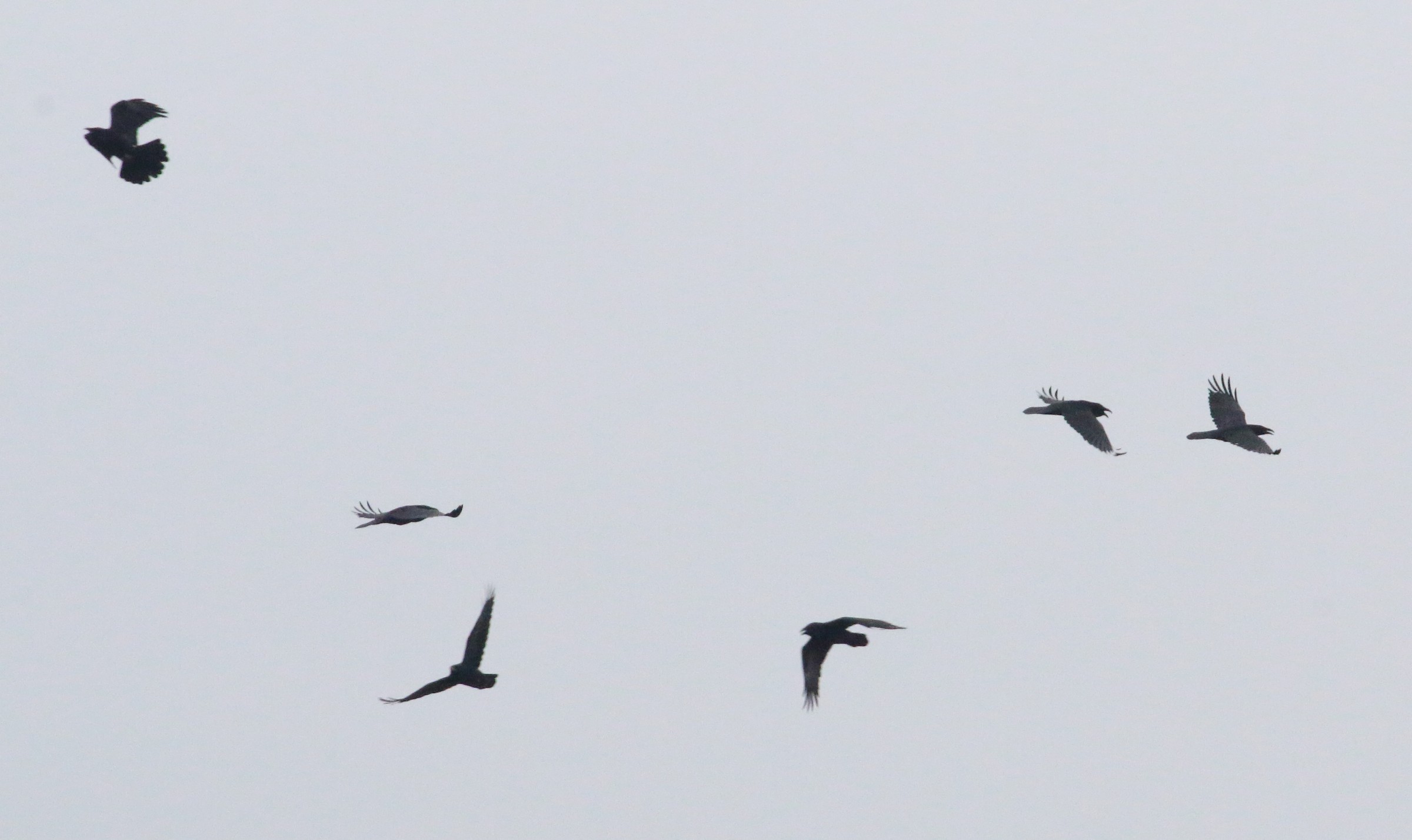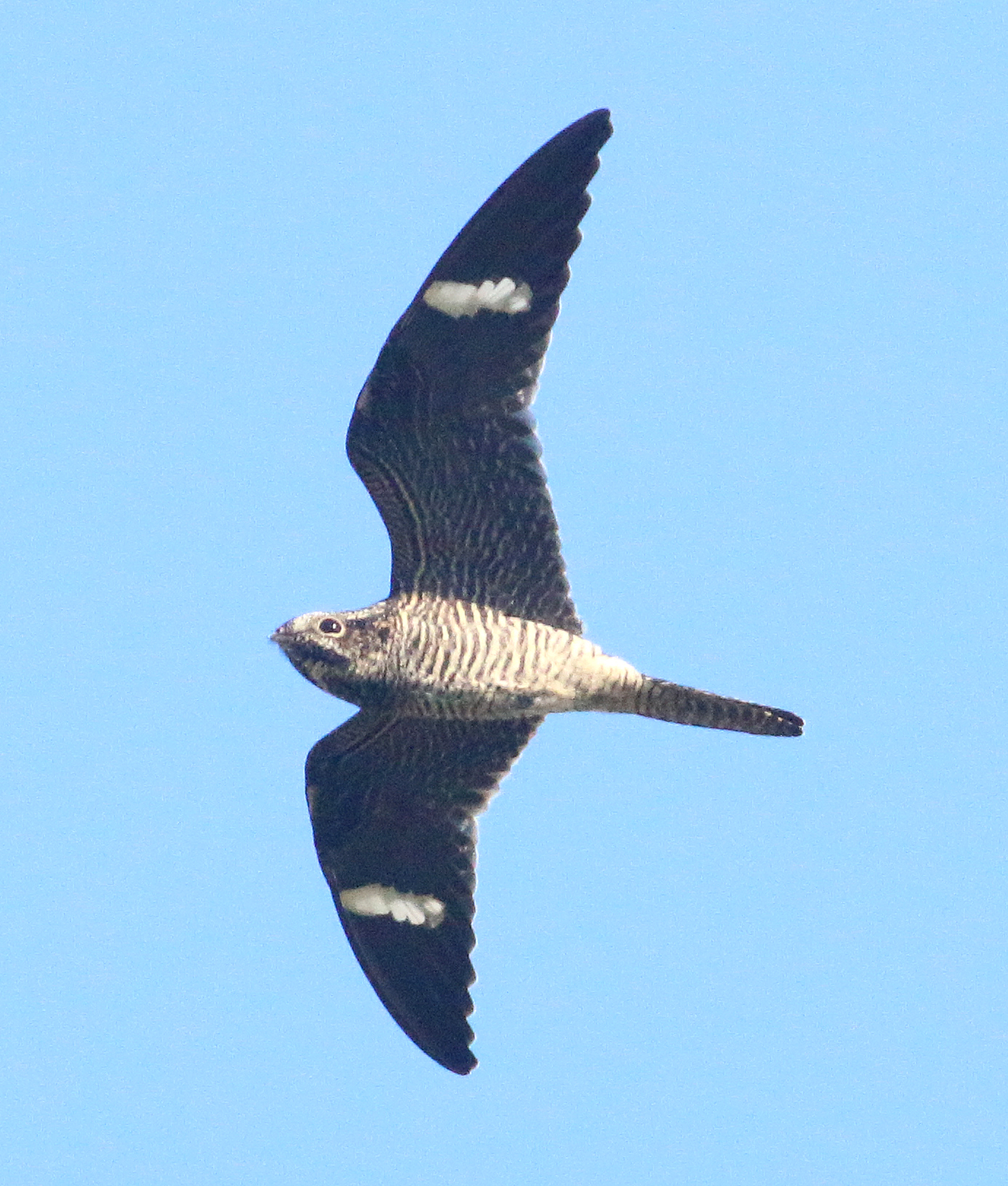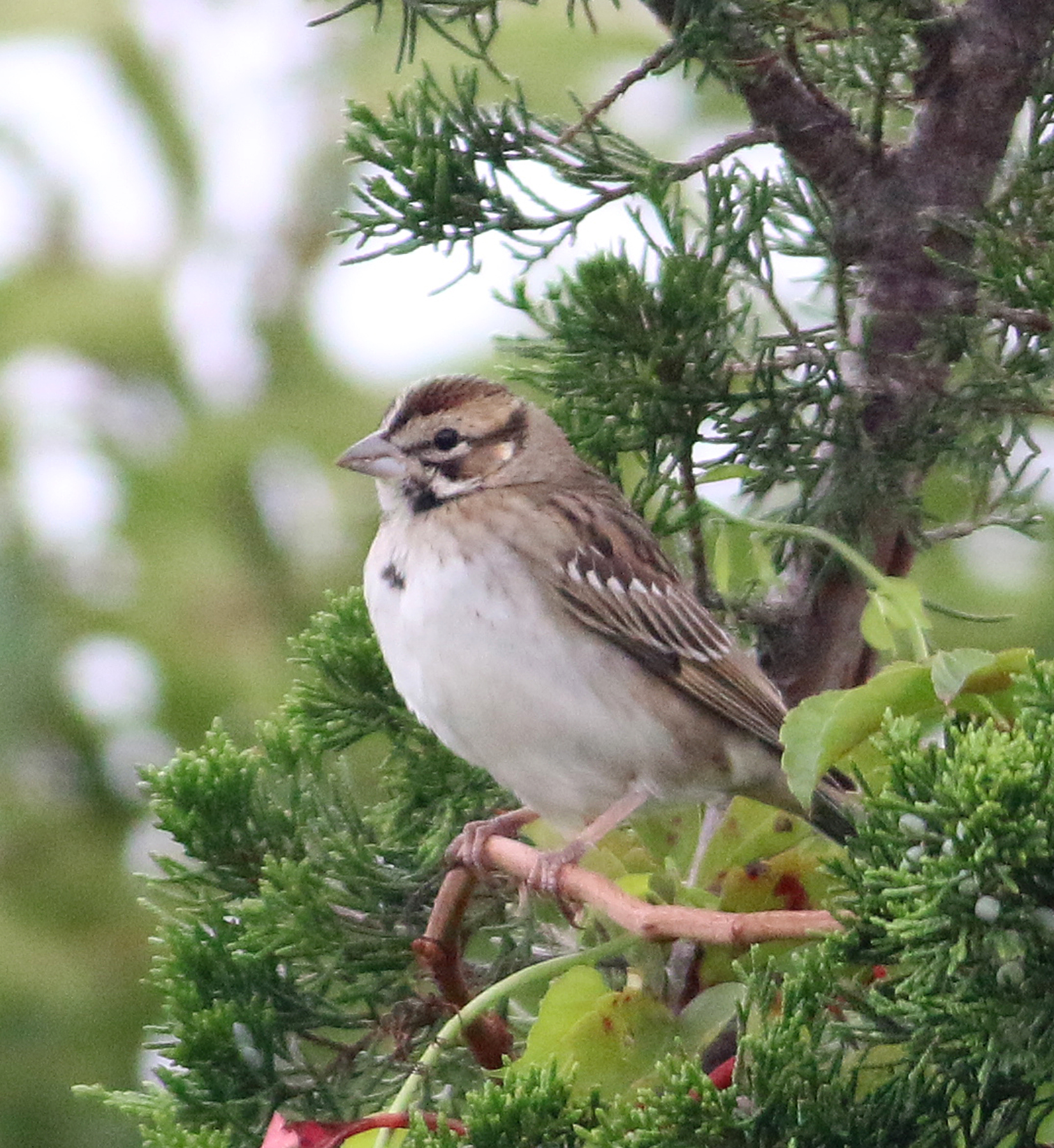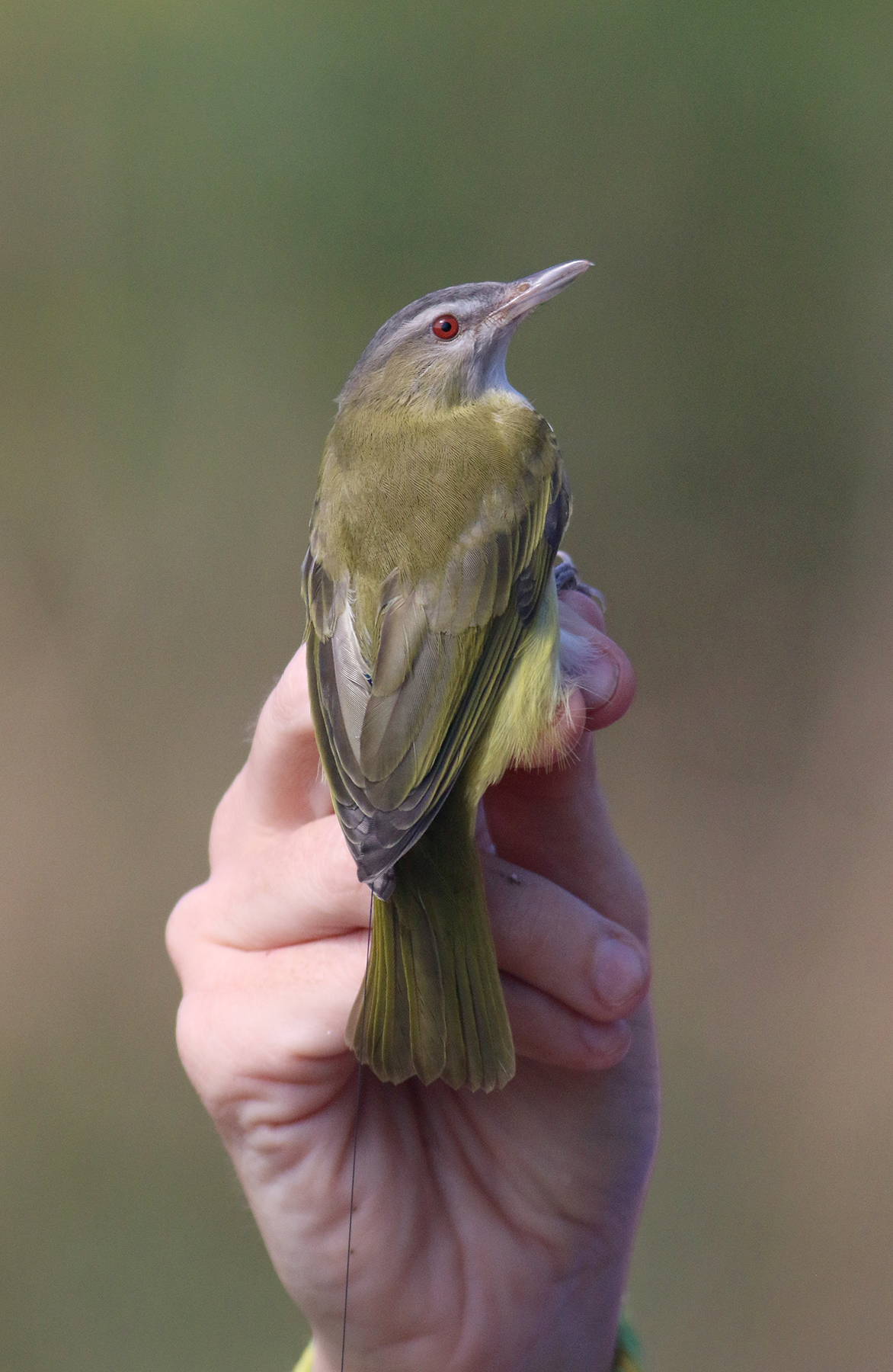OK folks, it’s time for my top 10 list for 2018. This is not necessarily the list of the rarest birds that I’ve seen this year, but what I’d call the most rewarding birding experiences from this past year.
#10: Upland Sandpipers. This was a good year for me to see Upland Sandpipers. I volunteered in the summer bird census at Lakehurst Naval Air Station, which is the only place that I know of where Upland Sandpipers now breed in NJ. That provided ample opportunity to visit and see and hear the Uppies, but although their flying displays were impressive and delightful, views of them on the ground were rare and distant and fleeting. Then one day in August when Jeanine and I were driving around Brig, what do we see along the side of the road but an Upland Sandpiper, closer than I’ve ever seen one before. I love surprises like that.
#9: Kentucky Warbler. I have seen only one or two Kentucky Warblers in my life. I have heard a few more, but in dense brush and with little hope of getting good looks. We were given a hint as to a location where historically they have been seen, so we gave it a try this May. It was a fairly big reserve/park, so I was not overly optimistic, knowing the secretive habits of this species. Yet when we arrived near a creek, there was one feeding and calling, giving superb views. After birding the rest of the reserve, when we approached the area again, the bird was not visible, but we we able to hear and see it (or another one) a short distance away. So getting to find Kentucky Warblers twice in one day (whether the same bird or different ones) was a real treat.
#8: Ravens at Sandy Hook. Common Ravens are becoming much more common in New Jersey, but it is still a fortunate day when we can see one or two of them. Yet on a trip to Sandy Hook in November, Jeanine and I were treated to seeing seven Ravens flying and circling over us together and calling and interacting with each other and with a Merlin. Wow. Graaawwwwkkkkk.
#7: Razorbills. It is turning out to be a super Razorbill winter here in NJ in 2018-2019. To give you an idea of the extent of the event, there were only three Razorbills spotted during the entire SEASON at the Avalon Seawatch in 2017, and in 2016 the season total was 11 Razorbills. This year a few consecutive days at Avalon each yielded more than 1000 Razorbills!! Unfortunately, on the afternoon that we showed up, all of the activity that day was in the early morning. (groan!) So in the last week of this year, my friend Chris and I headed up to Sandy Hook to see if we could spot some on the water. Indeed, we got a quick look at one, which was a state bird for Chris, and later in the day I spotted a group of four more together, one of which gave extended great scope views. I have never seen that many Razorbills together previously. If the Razorbill sightings continue through this winter, I suspect that they will be a highlight for the 2019 season. And maybe other alcids will join them.
#6: Lakehurst Nighthawks. One morning while volunteering at the Lakehurst bird census, the fog was making things difficult. But as soon as the fog lifted, there were a dozen or so Common Nighthawks feeding all around me. Circling again and again, calling constantly. It was quite a show. If it were the old days of film cameras, I would have shot several rolls of film. At times like this, I am glad that we have digital photos. What a treat to see them!
#5: Fall migrants at Sandy Hook. Yet another Sandy Hook highlight was a fall migration day in late September that started with a Connecticut Warbler perched on a low branch for nice views. Since it is so tough to see Connecticut Warbler anywhere, that sighting alone would have made it a notable day. Then after it disappeared into the mugwort and we were trying to re-find it, another bird flew out to a distant tree. I gave up on the warbler and was able to re-find the second bird, which turned out to be a Dickcissel. What a nice duo. Then an hour or so later while strolling around and sorting through a nice sparrow flock, one of the birds had distinct facial markings. A Lark Sparrow. What a great trio for a fall migration day. We met a group later that asked “Did you see anything interesting?” Our smiles probably said it all.
#4: A 21-warbler day. If you want to see lots of warblers in NJ, the place to go is Garret Mountain. So Jeanine and I took our annual expedition there in May, and we weren’t disappointed. I spotted 21 warbler species that day, and Jeanine ended up with 22! Somehow I missed Blackpoll Warbler that day, which is normally easy up there. It was a wonderful excursion with lots of birds including multiple Nashvilles, Bay-breasteds, and Canadas, and singing Tennessees, which I don’t see or hear very often. There’s something wonderful about breaking the 20-warbler barrier in a single day.
#3. Yellow-green Vireo. It started out as yet another nice September fall day in Cape May. Until a text appeared saying that a Yellow-green Vireo was just captured in a banding operation, and they would be releasing the bird in about 5 minutes. Luckily we were only a few blocks away, so we stopped by. I wouldn’t call it outstanding birding, but it was definitely an interesting experience to see this bird (which is rare to see anywhere in the US, and a first for NJ) up close, with a tracking device attached, being displayed for the birding paparazzi surrounding it. And then upon being released, disappearing like a bullet across the street, never to be seen again.
#2: Ecuador. My only foreign birding trip this year was a January excursion to the east slope of Ecuador with Pete and Jeanine, ranging from the Amazonian lowlands up to the Andean paramo. It was an outstanding trip with many highlights: quetzals, aracaris, numerous tanagers, a variety of hummingbirds, Hoatzins, and much much more. This was my favorite kind of birding trip, in which we had to find and identify the birds almost entirely by ourselves, with just 2 1/2 days using local guides. I love waking up in a new location, walking out the door, and nearly every bird and plant is different from those that I see at home. Despite having been to Ecuador twice previously and not having much guiding on this trip, I still manged to find 59 new lifer species, a good indication of the number of species that can be found in Ecuador.
#1: Roseate Terns. I had never seen Roseate Terns clearly. Oh sure, there was that trip to Tobago where some terns were flying by that a guide identified as Roseates, but I couldn’t really identify them. They appear in NJ annually in small numbers, but not to me. Until this year. Then on June 25, on one of our many trips to the Sedge Island this year, Jeanine and I spotted a tern that looked different…longer winged, and lighter color overall, and with maybe a longer bill. It had to be a Roseate, right? But then before getting confirmation and a photo, it flew off and landed on a distant sandbar. We hiked over with scope, and now were able to see details, including bands. ROSEATE TERN! And then we saw another. And another. Wow. Three Roseates. We thought that was the end of the story, but then on our next trip we saw another one, and then on another trip a week later three more, so they were there for at least two weeks. The interesting thing is that there were were actually multiple Roseates cycling in and out of the Sedges this summer, based on the number of birds that we and others saw and their bands. Have they been there in previous years and we just not noticed them? Will they be back again next year? You know that we’ll be looking for them. Stay tuned.
